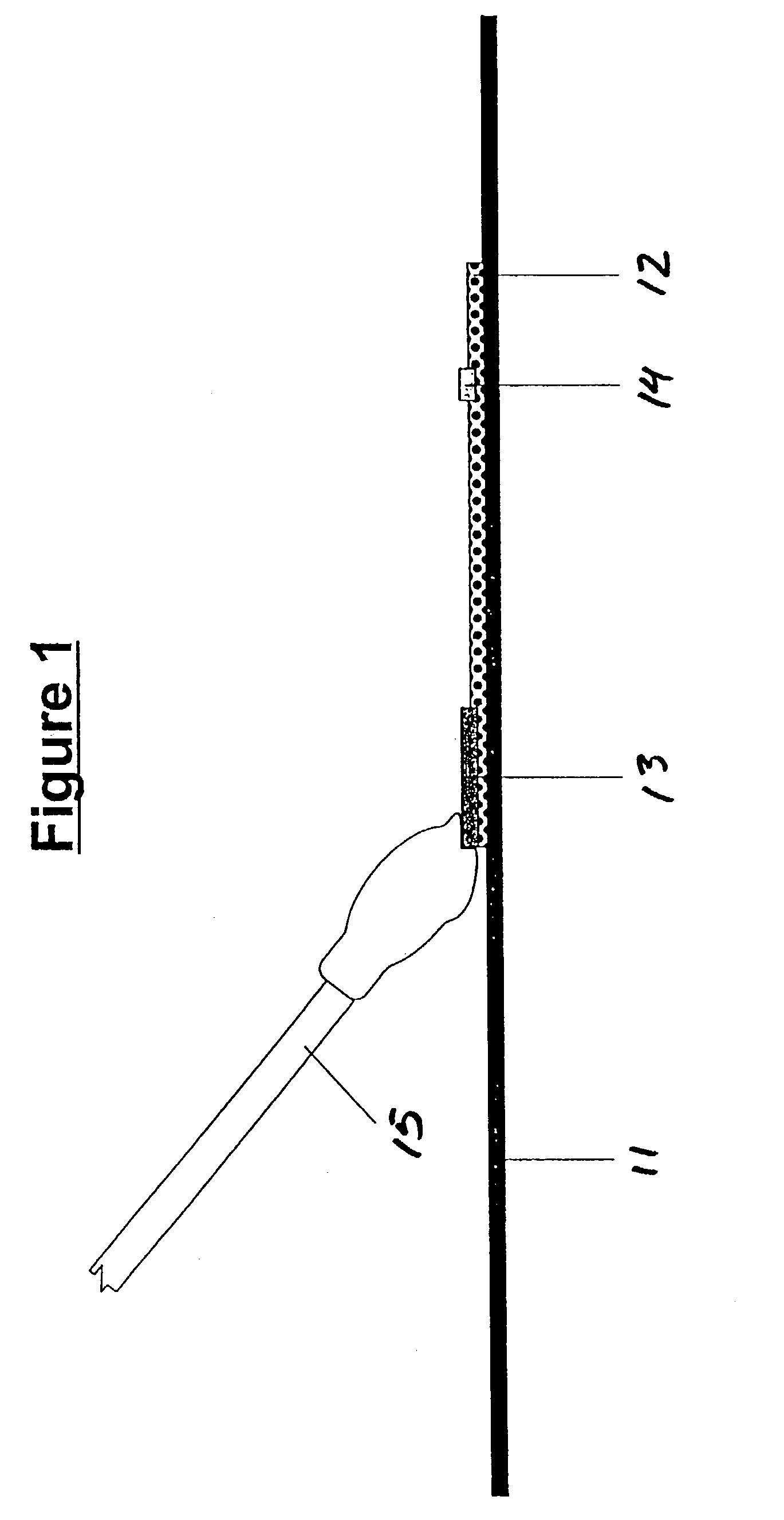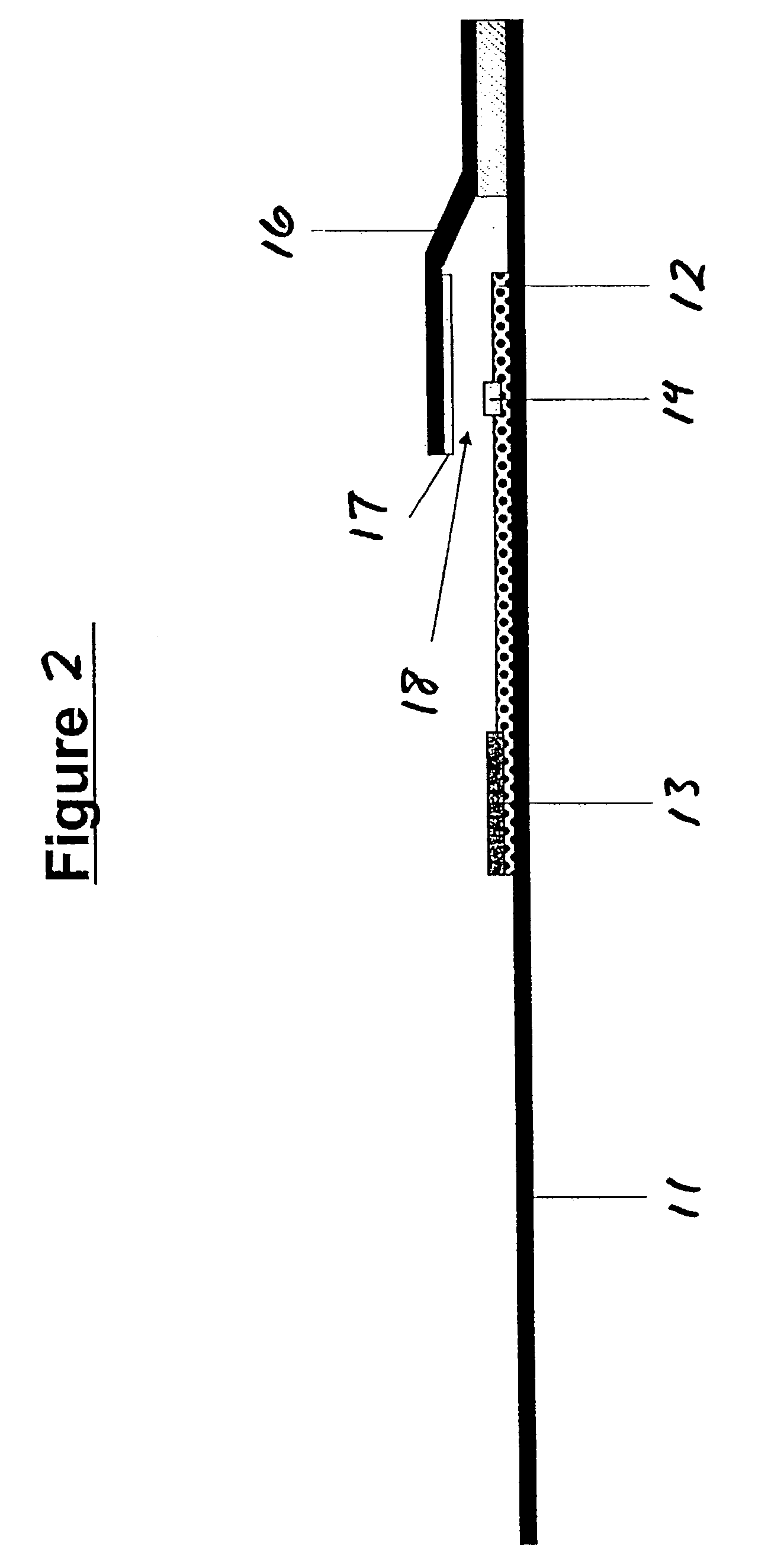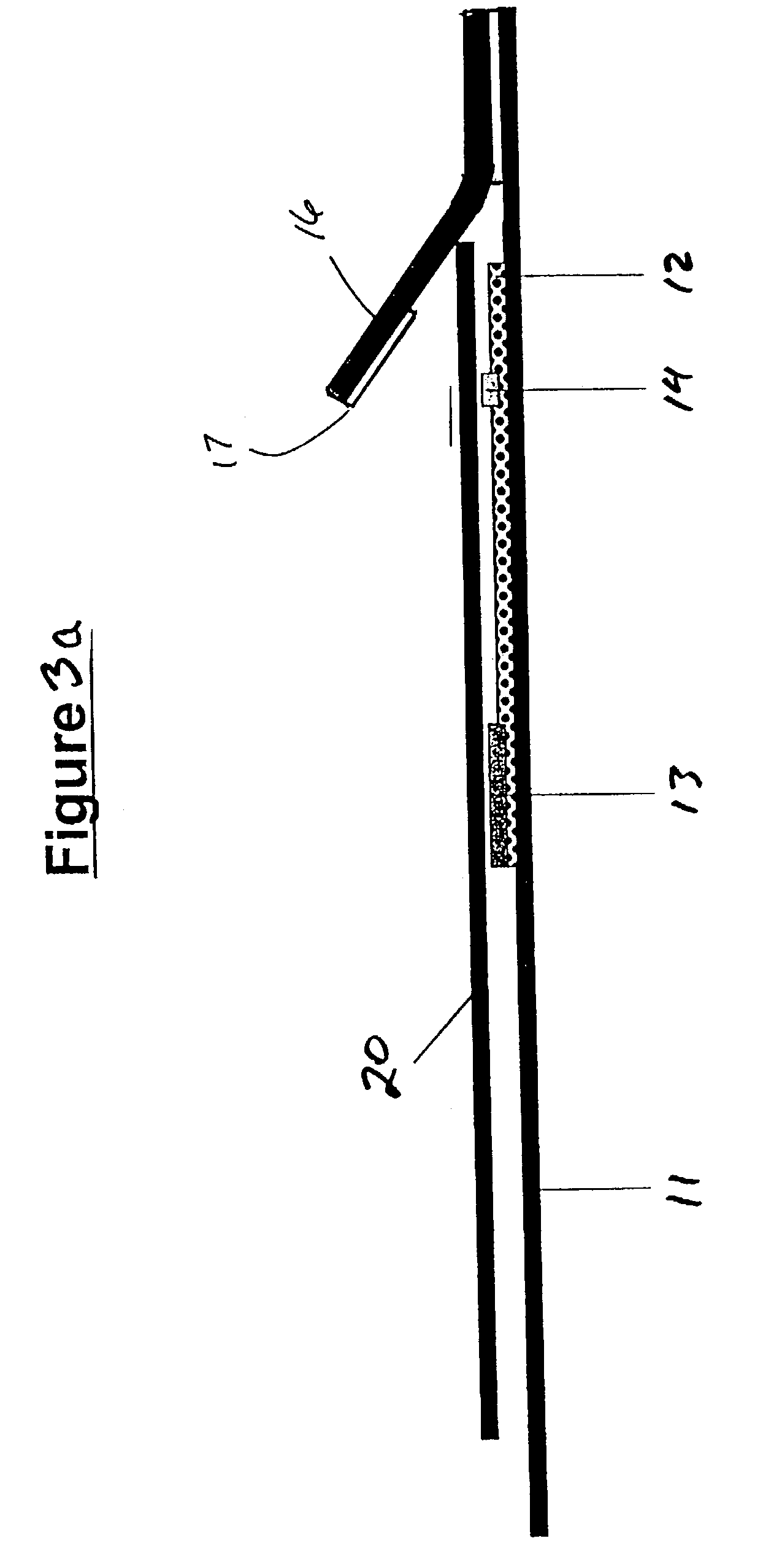Assays for trichomonal and other hydrolases
a technology of trichomonal hydrolase and hydrolase, which is applied in the field of hydrolases, can solve the problems of inability to detect approximately half of the infected women, labor-intensive methods, and inconvenience of vaginal discharge, and achieve the effects of improving selectivity toward trichomonal hydrolase activity, convenient use, and convenient wetting
- Summary
- Abstract
- Description
- Claims
- Application Information
AI Technical Summary
Benefits of technology
Problems solved by technology
Method used
Image
Examples
experiment 1
[0078]This experiment examines the hydrolysis of the substrates CBZ-Arg-Arg-MNA (ZRR-MNA) and D-Val-Leu-Lys-MNA (VLK-MNA) by trichomonal hydrolases over the pH range 2.8 to 9.2 and examines the impact of vaginal fluid on hydrolase activity at each pH.
Materials
[0079]200 mM buffer solutions:[0080]Glycyl-glycine (Gly-gly), pH 2.8[0081]Sodium acetate, pH 5.1[0082]2-(N-Morpholino)propane-sulfonic acid (MOPS), pH 7.0[0083]N-2-Hydroxyethylpiperazine-N′-2-ethanesulfonic acid (HEPES), pH 7.5[0084]Tris(hydroxymethyl)aminomethane (TRIS), pH 8.0[0085]Sodium borate, pH 9.5[0086]Pooled normal vaginal fluid supernatant (NVS), prepared as follows: vaginal fluid specimens collected on Dacron swabs from normal, uninfected women were centrifuged to extract the fluid from the swabs, and the pooled fluid was frozen until use. The thawed fluid was centrifuged to pellet the particulate matter, the particulate materials and the supernatant were separated and each was diluted 1:10 in acetate buffer.[0087]2 ...
experiment 2
[0098]This experiment examines the hydrolysis of the substrates CBZ-Arg-Arg-MNA (ZRR-MNA), BOC-Leu-Arg-Arg-AMC (BLRR-AMC), BOC-Leu-Lys-Arg-AMC (BLKR-AMC), and CBZ-Lys-Lys-Arg-AMC (ZKKR-AMC) by trichomonal hydrolases and vaginal fluid hydrolases.
Materials
[0099]Buffer solutions consisting of 200 mM sodium acetate, pH 5, or 200 M Tris-(hydroxymethyl)aminomethane (TRIS), pH 8[0100]100 mM CBZ-Arg-Arg-MNA acetate (ZRR-MNA), in ethanol[0101]100 mM BOC-Leu-Arg-Arg-AMC (BLRR-AMC) in dimethylformamide[0102]100 mM BOC-Leu-Lys-Arg-AMC (BLKR-AMC) in dimethylformamide[0103]100 mM CBZ-Lys-Lys-Arg-MNA (ZKKR-AMC), in water[0104]6.3 mM L-cysteine hydrochloride in water[0105]pooled normal vaginal fluid supernatant (NVS) prepared by collecting vaginal fluid specimens on Dacron swabs from normal, uninfected women, centrifuging to extract the undiluted fluid from the swabs and to pellet the particulate matter, and pooling the supernatants[0106]whole normal vaginal fluid (NVF) from a single normal, uninfe...
experiment 3
[0117]This experiment demonstrates that most of the interfering hydrolytic activity present in vaginal fluid collected from normal, uninfected women is present in the particulate matter and can be largely removed by centrifugation.
Materials
[0118]Swabs (two per donor) containing vaginal fluid specimens collected from normal, uninfected women at intervals of 1–2 days apart[0119]Substrate solutions consisting of 8 mM CBZ-Arg-Arg-MNA acetate (ZRR-MNA), 0.8 mM L-cysteine, and either 100 mM sodium acetate, pH 5, or 100 mM Tris(hydroxymethyl)aminomethane (TRIS), pH 8[0120]Indicator solution consisting of 0.4 mM para-dimethylamino cinnamaldehyde, 1.4% w / v sodium dodecyl sulfate, and 100 mM citric acid (pH 4)
Procedure
[0121]Pairs of vaginal fluid specimens were obtained from donors on three separate days—Day 1, Day 3, and Day 4—and tested on the day of collection. The vaginal fluid was extracted from each swab by centrifugation. The vaginal fluid supernatant from the first swab from each dono...
PUM
 Login to View More
Login to View More Abstract
Description
Claims
Application Information
 Login to View More
Login to View More - R&D
- Intellectual Property
- Life Sciences
- Materials
- Tech Scout
- Unparalleled Data Quality
- Higher Quality Content
- 60% Fewer Hallucinations
Browse by: Latest US Patents, China's latest patents, Technical Efficacy Thesaurus, Application Domain, Technology Topic, Popular Technical Reports.
© 2025 PatSnap. All rights reserved.Legal|Privacy policy|Modern Slavery Act Transparency Statement|Sitemap|About US| Contact US: help@patsnap.com



